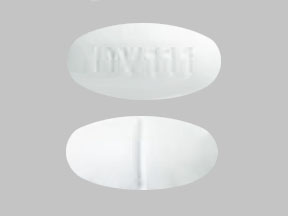Sabril Disease Interactions
There are 4 disease interactions with Sabril (vigabatrin).
Vigabatrin (applies to Sabril) vision loss
Major Potential Hazard, Moderate plausibility. Applicable conditions: Visual Defect/Disturbance
Vigabatrin causes permanent bilateral concentric visual field constriction. The onset of vision loss from vigabatrin is unpredictable, and can occur within weeks of starting treatment or sooner, or at any time after starting treatment, even after months or years. The risk of vision loss increases with increasing dose and cumulative exposure, but there is no dose or exposure known to be free of risk of vision loss. Because of the risk of vision loss, and because, when it is effective, vigabatrin provides an observable symptomatic benefit, patient response and continued need for treatment should be periodically assessed. If the need clearly outweighs the risk, caution should be exercised when using vigabatrin therapy in patients with, or at high risk of, other types of irreversible vision loss. Vigabatrin should not be used in patients that are being treated for retinopathy or glaucoma.
Antiepileptics (applies to Sabril) suicidal tendency
Moderate Potential Hazard, Moderate plausibility. Applicable conditions: Depression, Psychosis
Antiepileptic drugs (AEDs) have been associated with an increased risk of suicidal thoughts or behavior in patients taking these drugs for any indication. Pooled analyses of 199 placebo-controlled clinical studies involving the use of 11 different AEDs showed that patients receiving AEDs had approximately twice the risk of suicidal thinking or behavior compared to patients receiving placebo. AEDs should be administered cautiously in patients with depression or other psychiatric disorders; phentermine-topiramate should be avoided in patients with history of suicidal attempts or active suicidal ideation. The risk of suicidal thoughts and behavior should be carefully assessed against the risk of untreated illness, bearing in mind that epilepsy and many other conditions for which AEDs are prescribed are themselves associated with morbidity and mortality and an increased risk of suicidal thoughts and behavior. Patients, caregivers, and families should be alert to the emergence or worsening of signs and symptoms of depression, any unusual changes in mood or behavior, or the emergence of suicidal thoughts or behavior. If patients have symptoms of suicidal ideation or behavior, a dosage reduction or treatment discontinuation should be considered.
Vigabatrin (applies to Sabril) neurotoxicity
Moderate Potential Hazard, Moderate plausibility. Applicable conditions: CNS Disorder
Vigabatrin has produced pathological changes in the brains of rats and long-term neurobehavioral abnormalities (convulsions, neuromotor impairment, learning deficits) were also observed. In humans, abnormal MRI signal changes characterized by increased T2 signal and restricted diffusion in a symmetric pattern involving the thalamus, basal ganglia, brain stem, and cerebellum have been observed in some infants treated for infantile spasms (IS) with vigabatrin. Studies of the effects of vigabatrin on MRI and changes in visual and somatosensory evoked potentials (EP) in adult epilepsy patients have not been clearly defined.
Vigabatrin (applies to Sabril) peripheral neuropathy
Moderate Potential Hazard, Moderate plausibility.
Vigabatrin causes symptoms of peripheral neuropathy in adults. There is insufficient evidence to determine if development of these signs and symptoms were related to duration of vigabatrin treatment, cumulative dose, or if the findings of peripheral neuropathy were completely reversible upon discontinuation of vigabatrin. Therapy with vigabatrin should be administered cautiously in patients with peripheral neuropathy.
Switch to professional interaction data
Sabril drug interactions
There are 288 drug interactions with Sabril (vigabatrin).
Sabril alcohol/food interactions
There is 1 alcohol/food interaction with Sabril (vigabatrin).
More about Sabril (vigabatrin)
- Sabril consumer information
- Check interactions
- Compare alternatives
- Pricing & coupons
- Reviews (1)
- Drug images
- Side effects
- Dosage information
- During pregnancy
- Generic availability
- FDA approval history
- Drug class: gamma-aminobutyric acid analogs
- Breastfeeding
- En español
Related treatment guides
Drug Interaction Classification
| Highly clinically significant. Avoid combinations; the risk of the interaction outweighs the benefit. | |
| Moderately clinically significant. Usually avoid combinations; use it only under special circumstances. | |
| Minimally clinically significant. Minimize risk; assess risk and consider an alternative drug, take steps to circumvent the interaction risk and/or institute a monitoring plan. | |
| No interaction information available. |
See also:
Further information
Always consult your healthcare provider to ensure the information displayed on this page applies to your personal circumstances.


